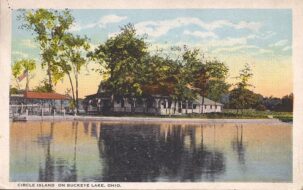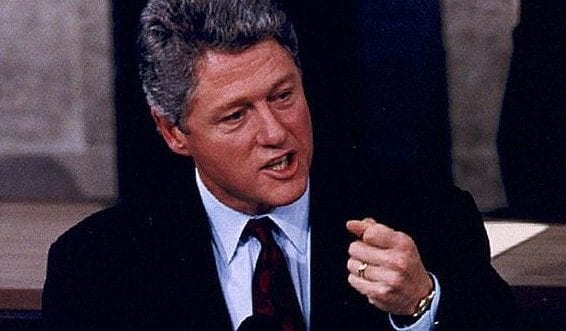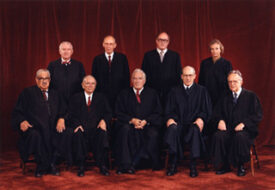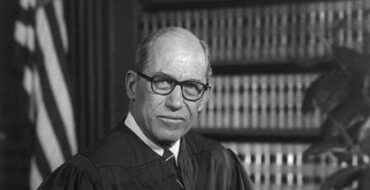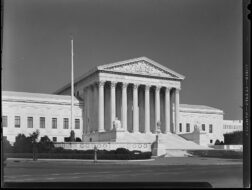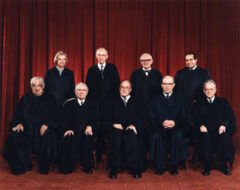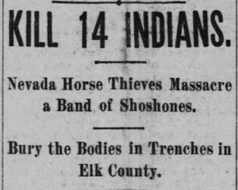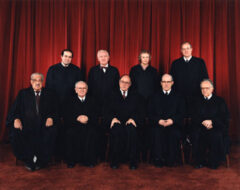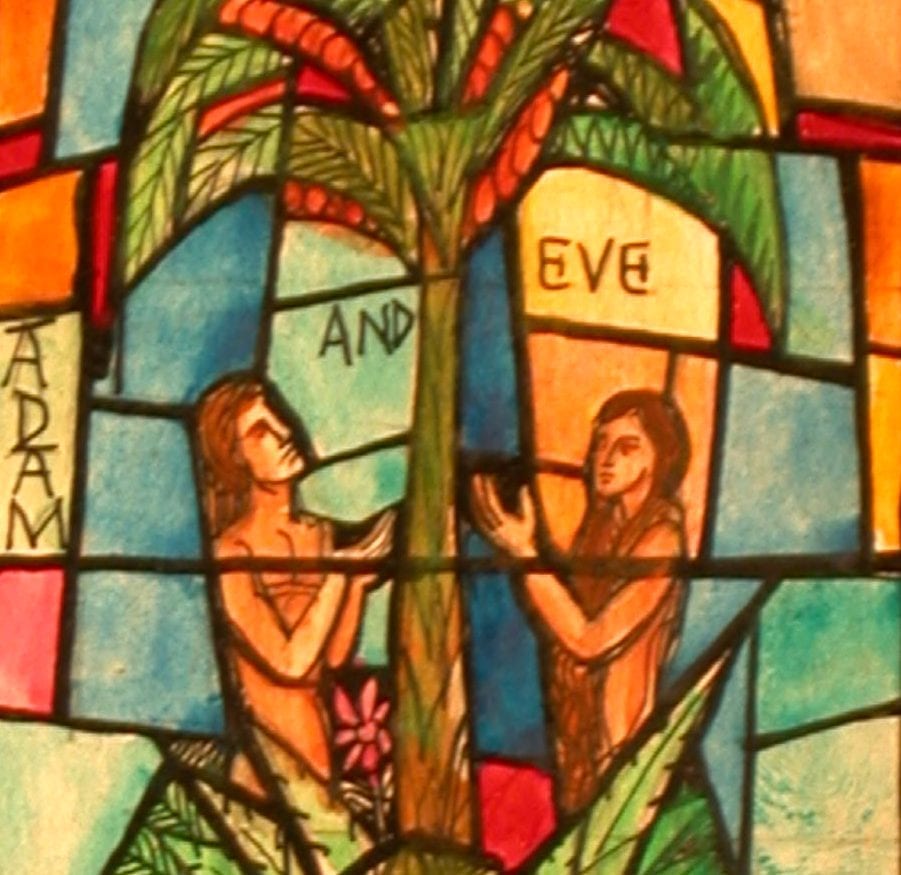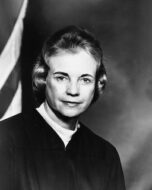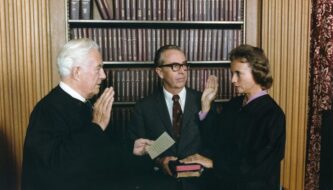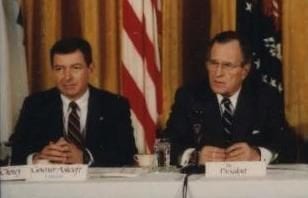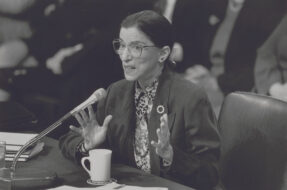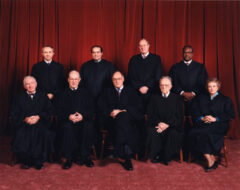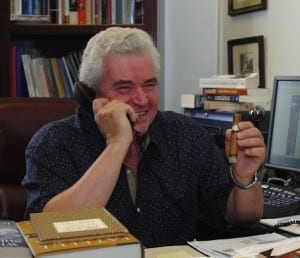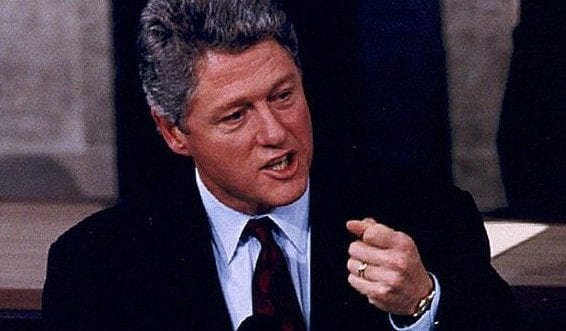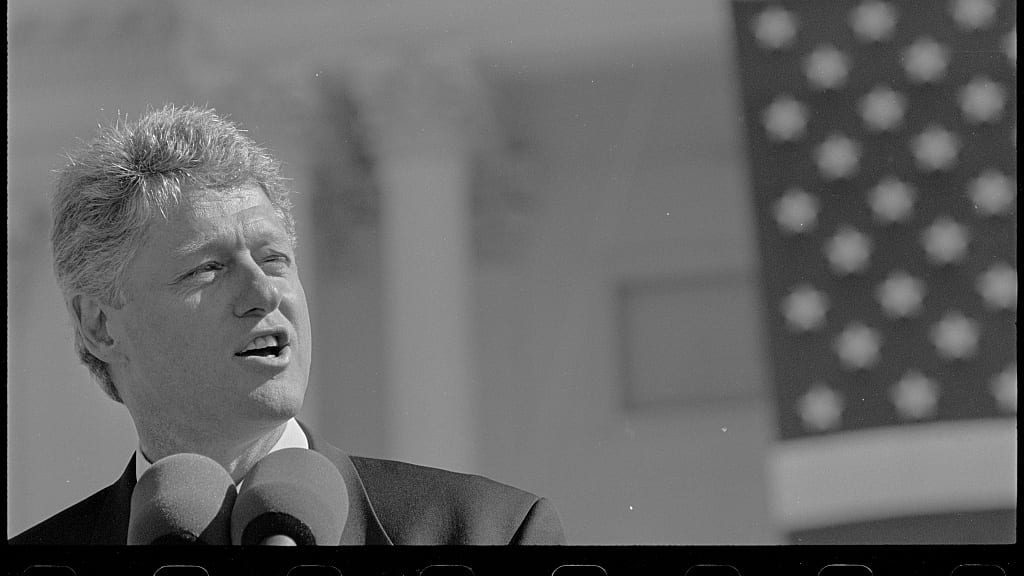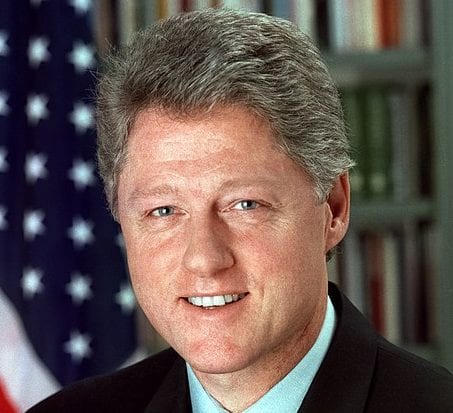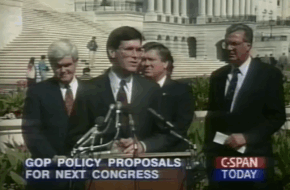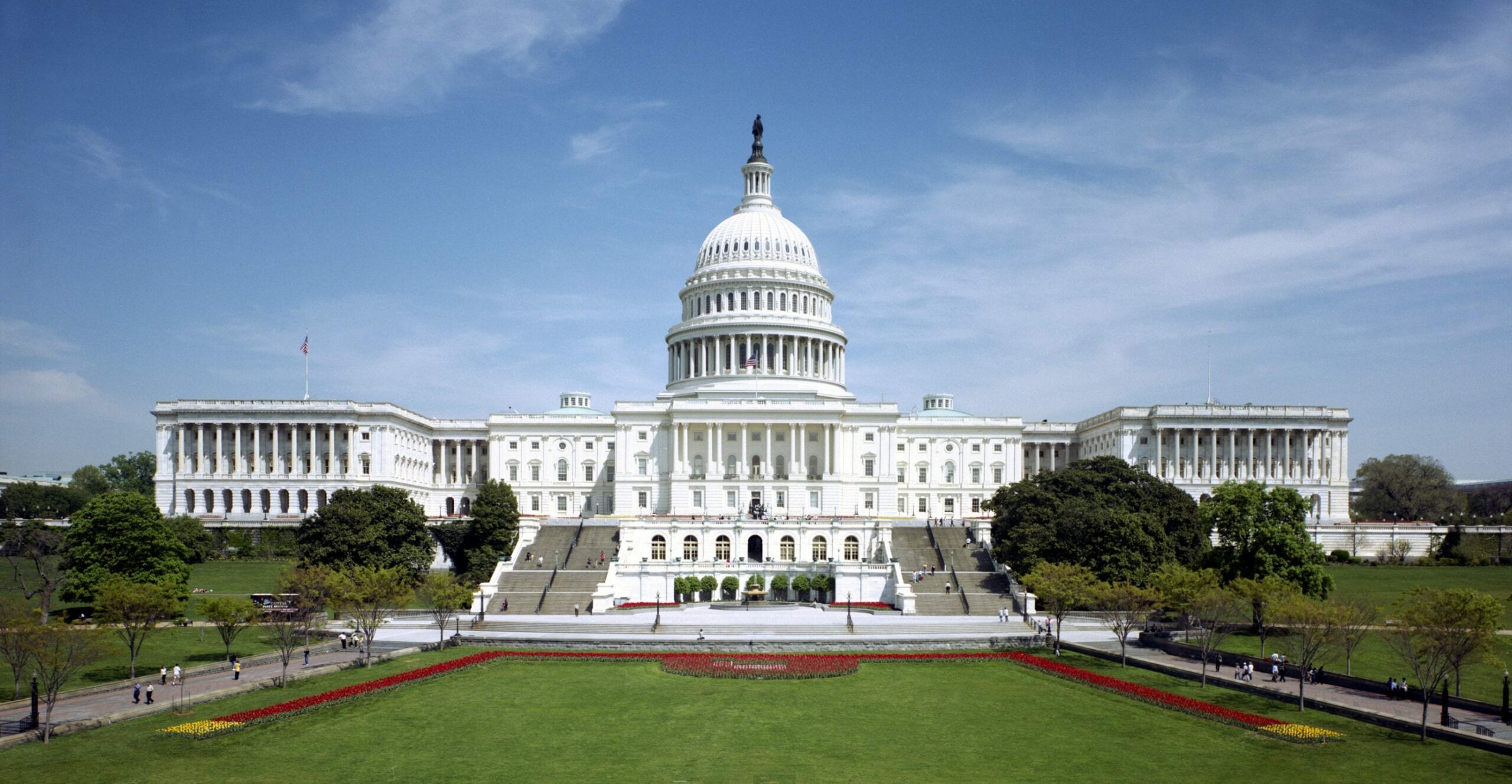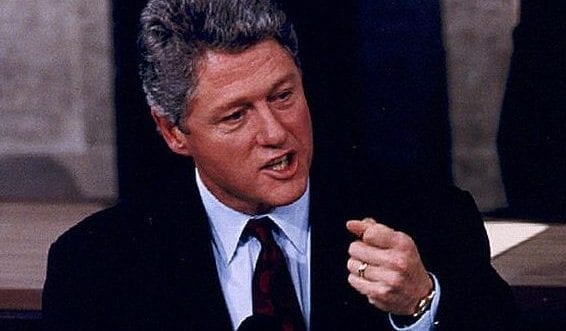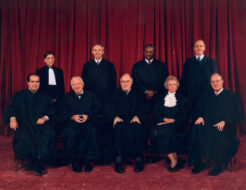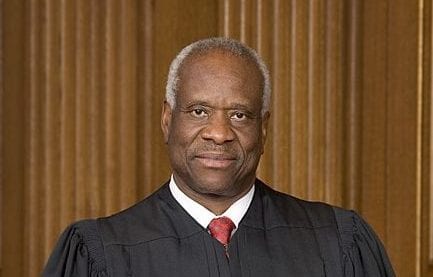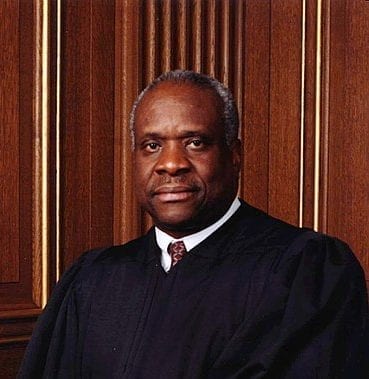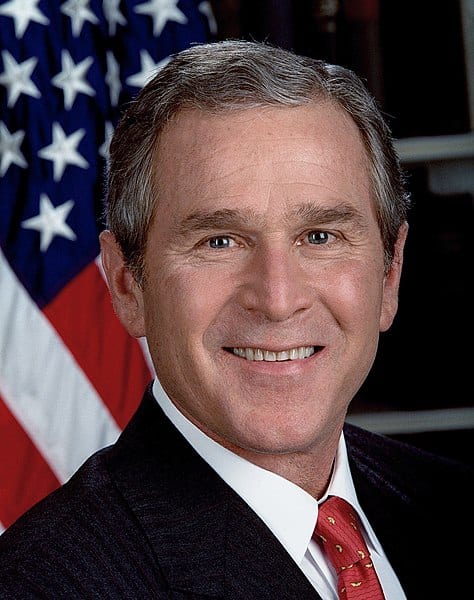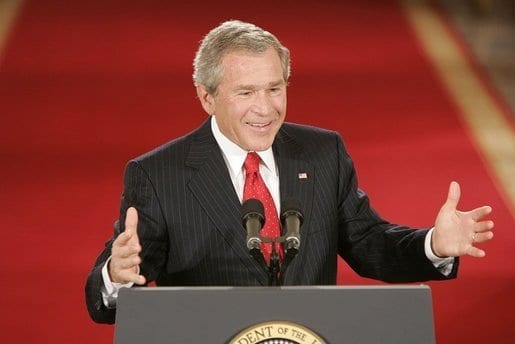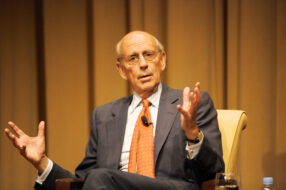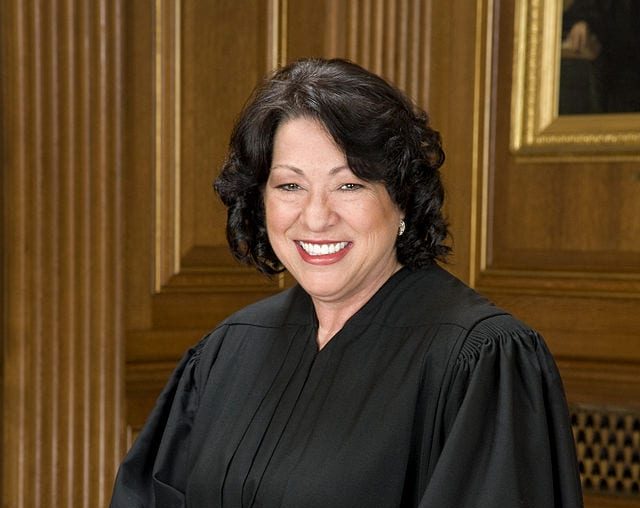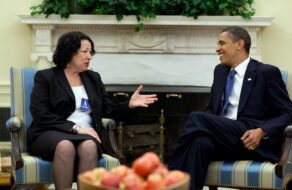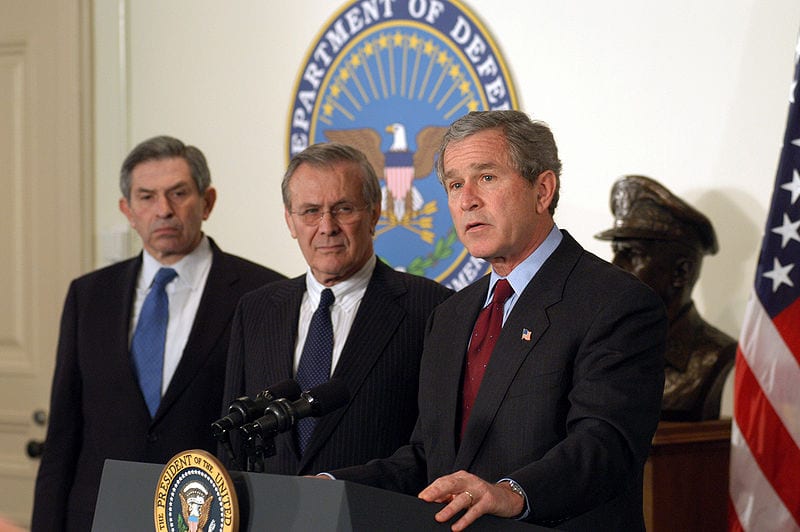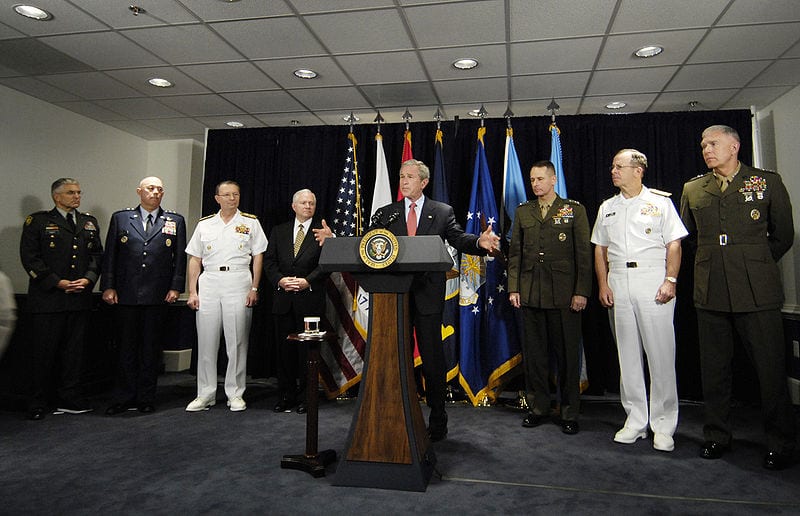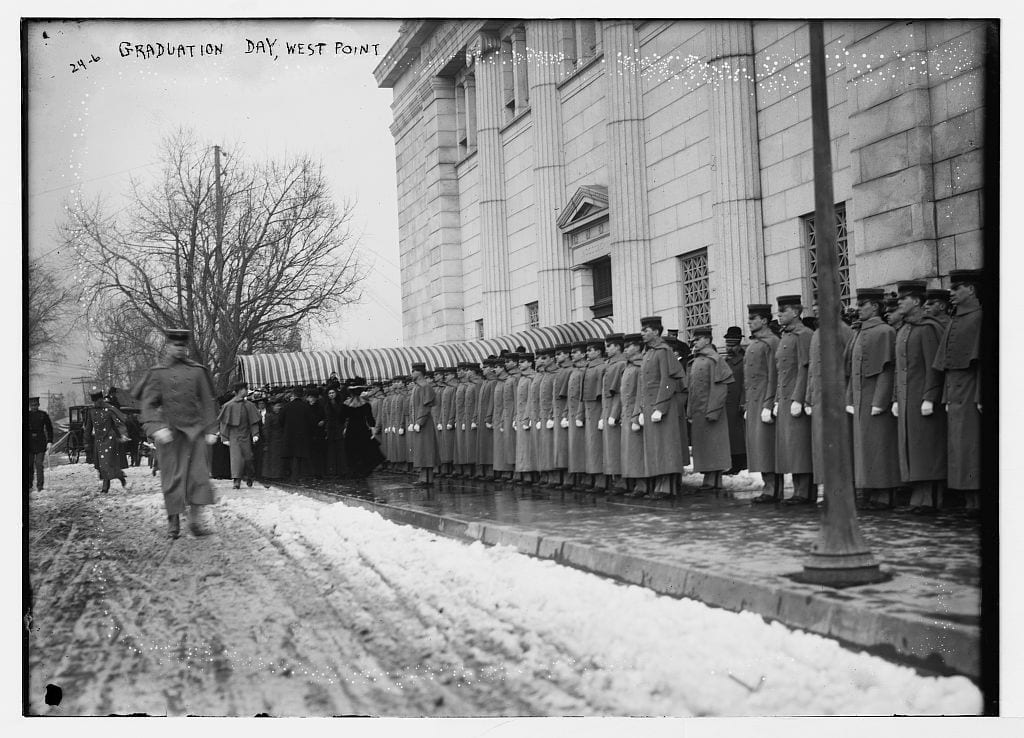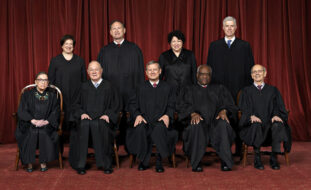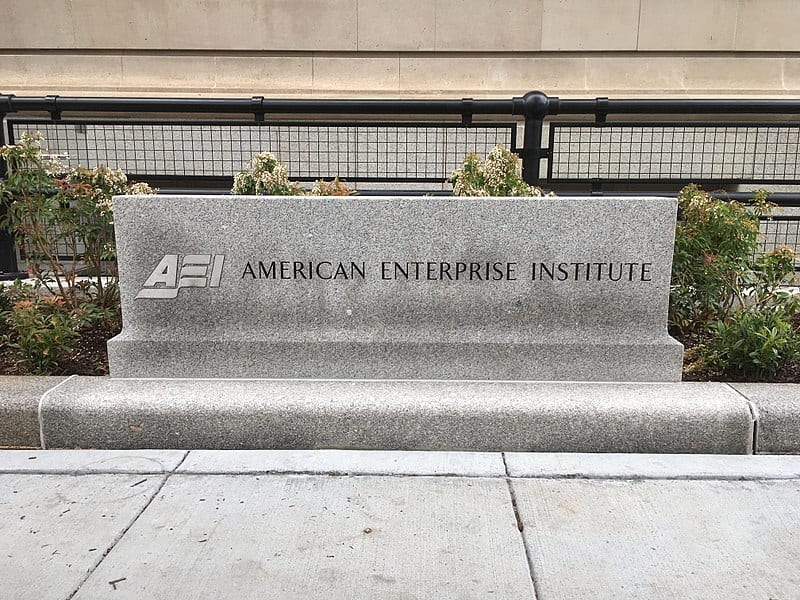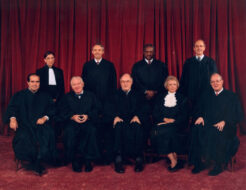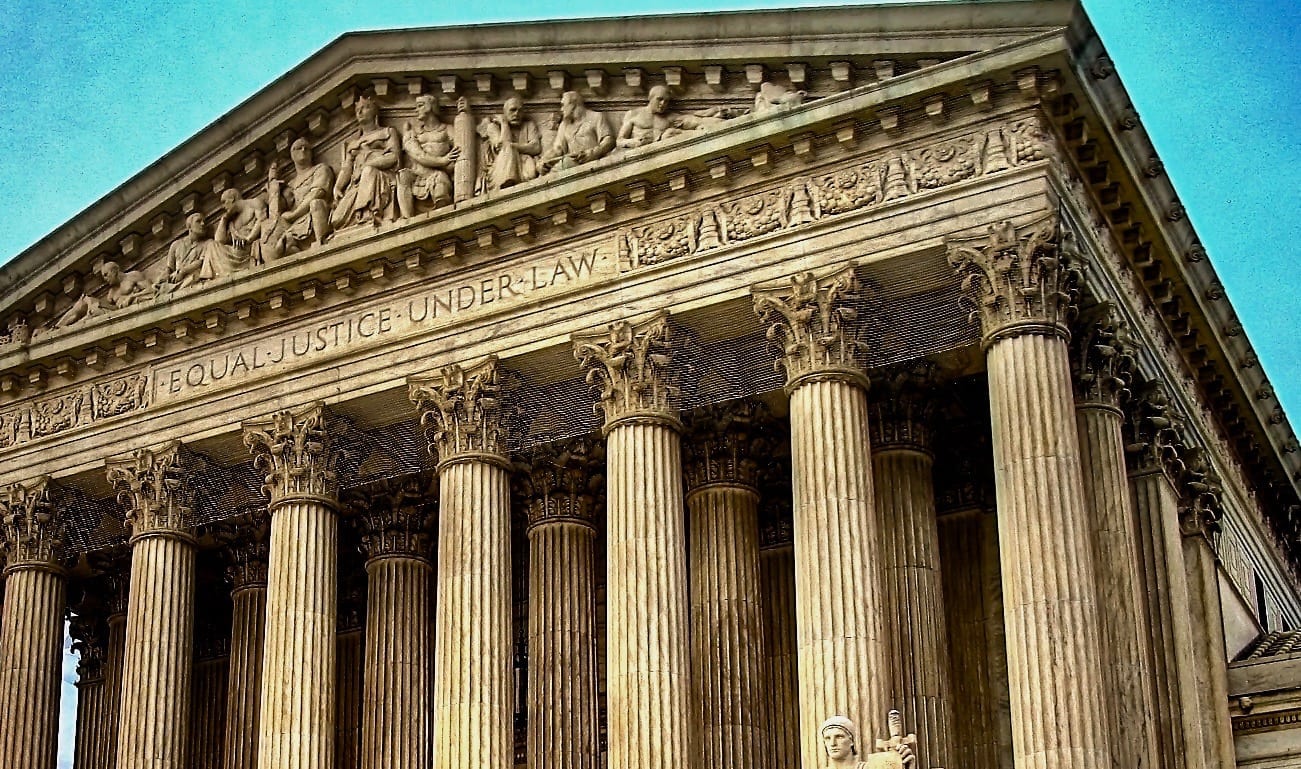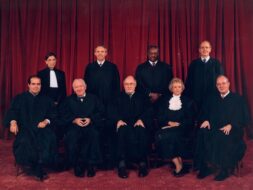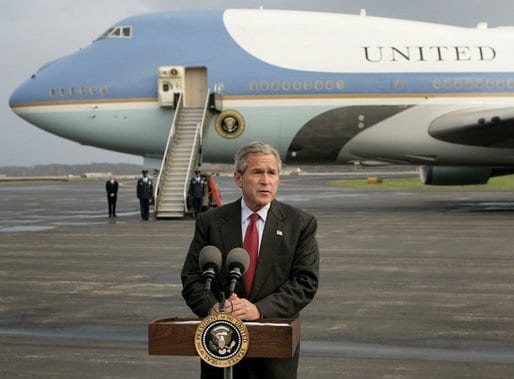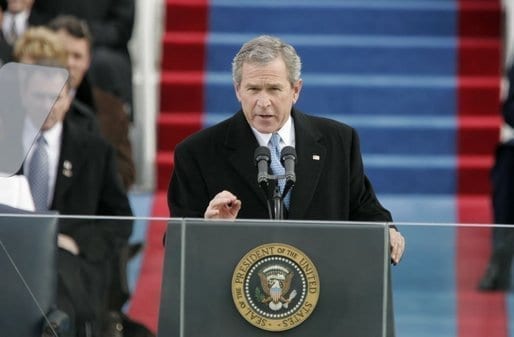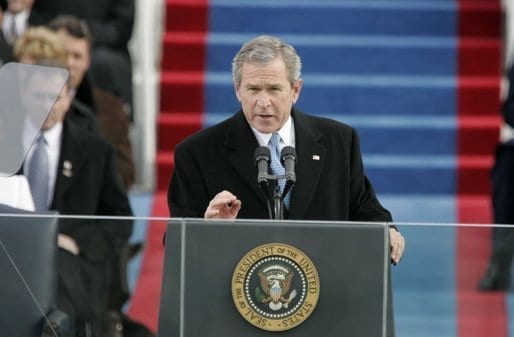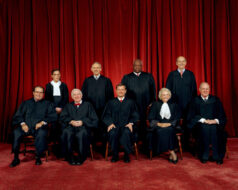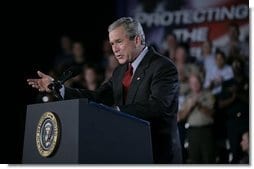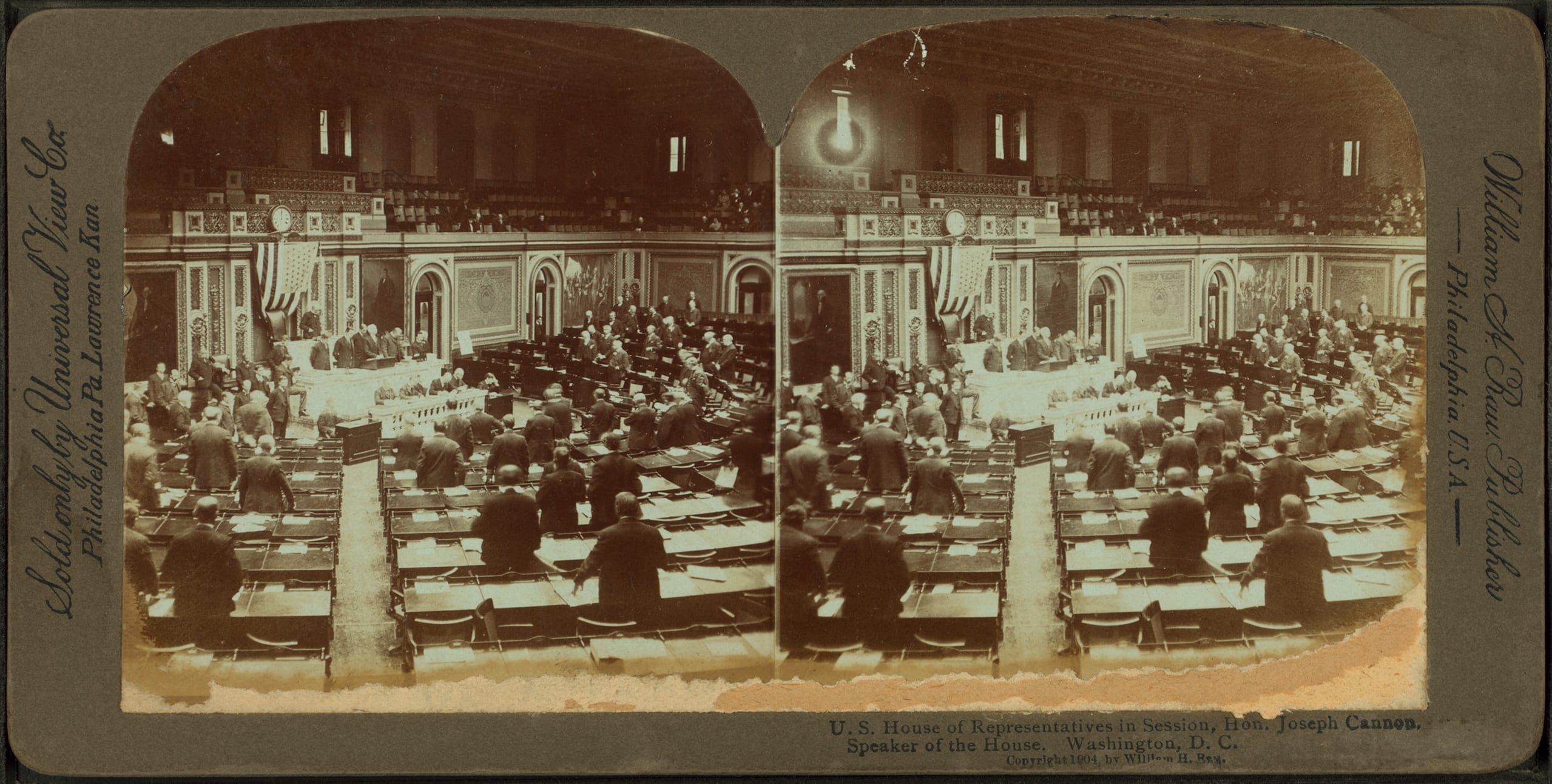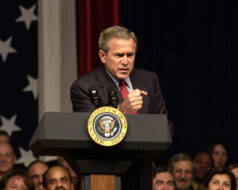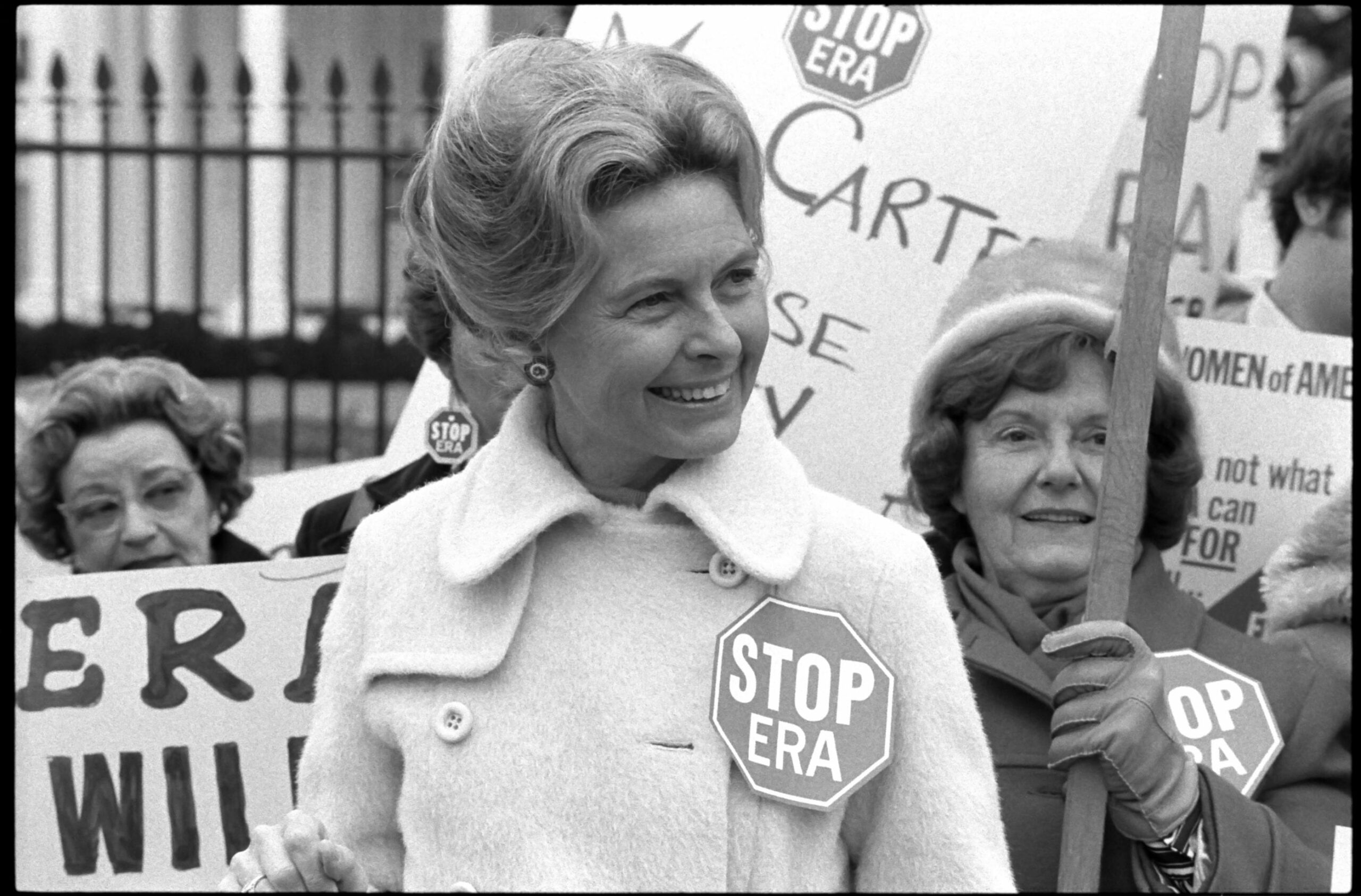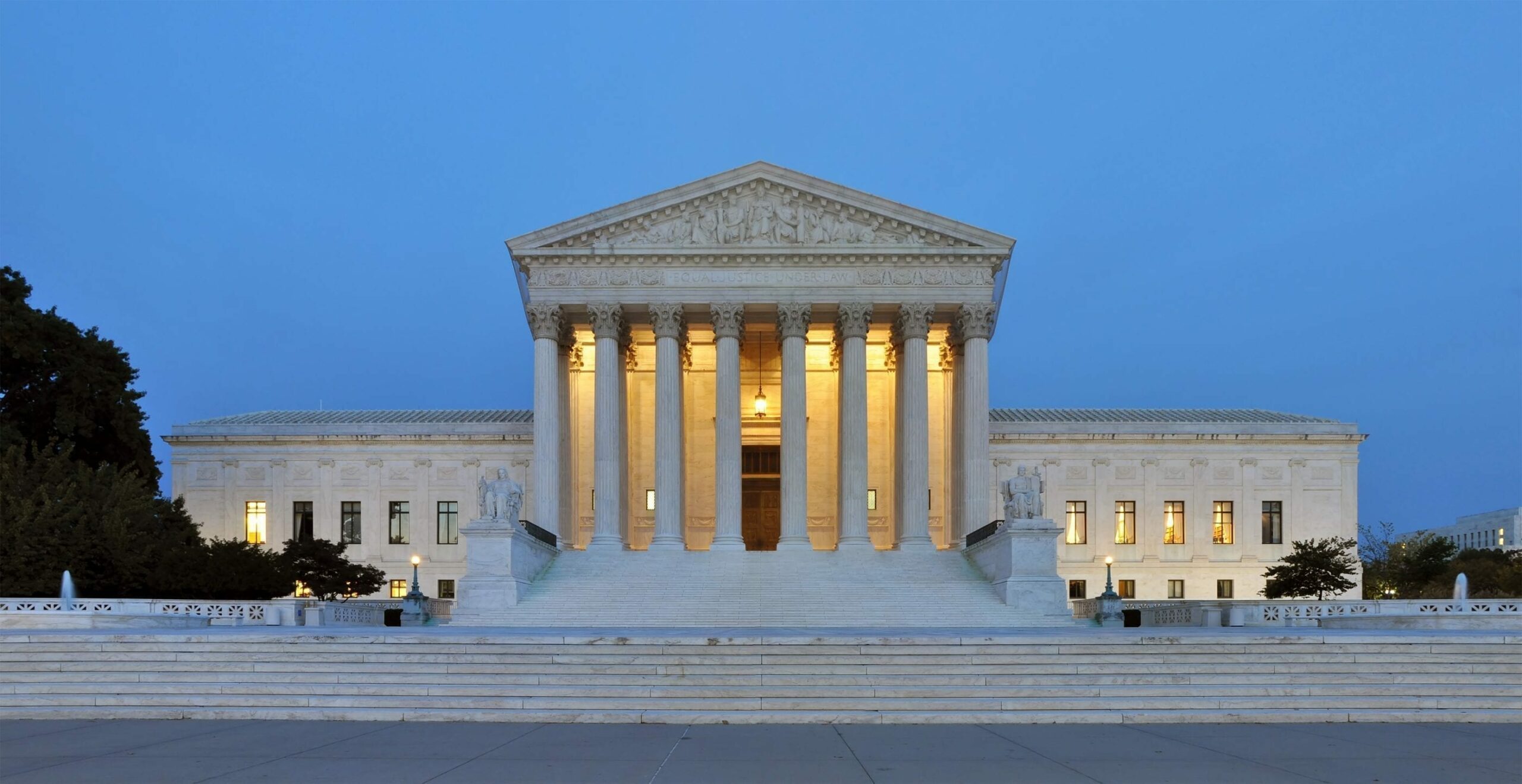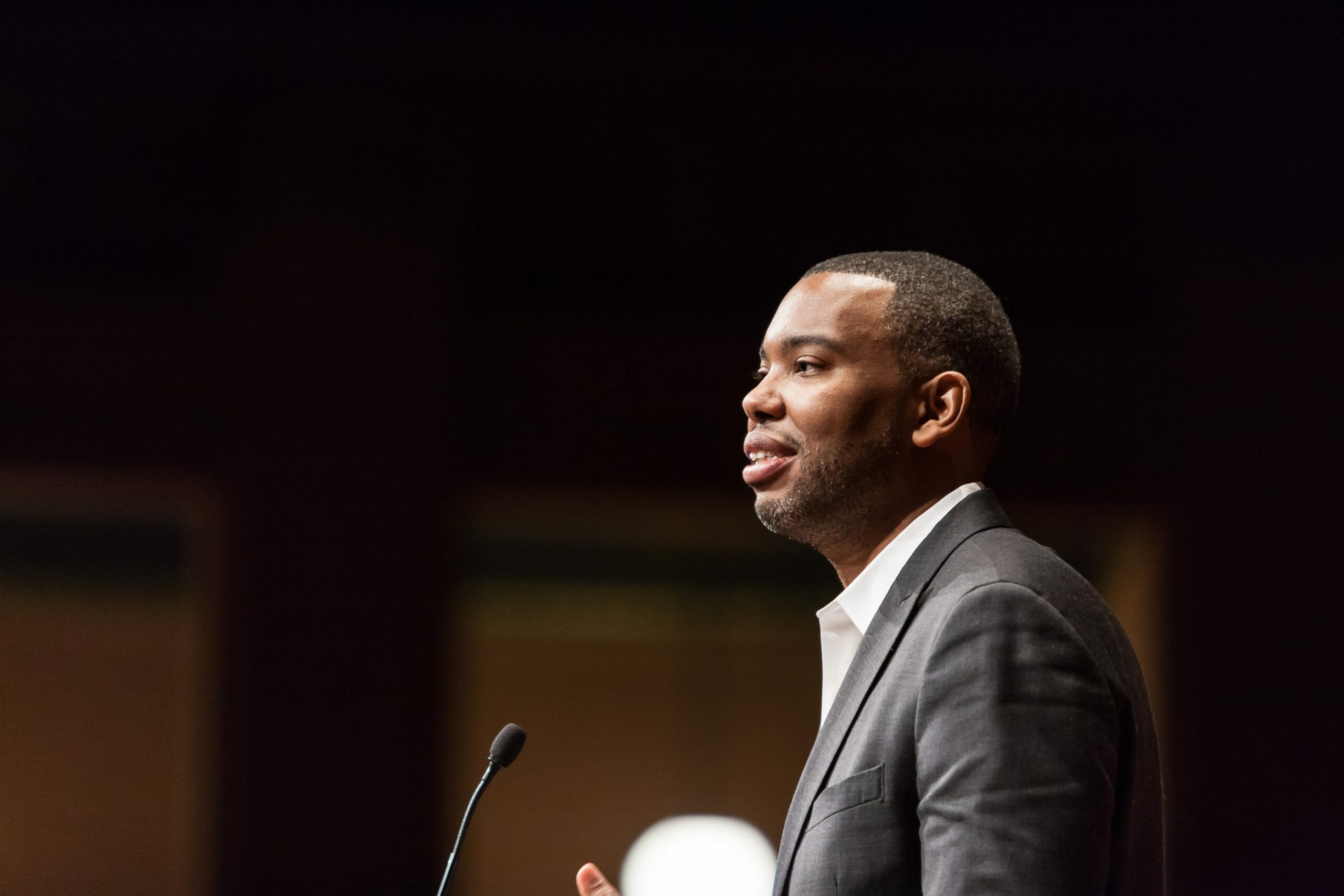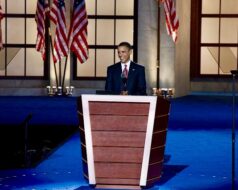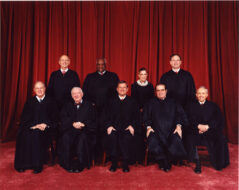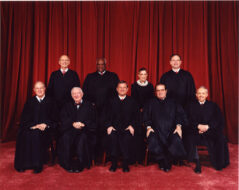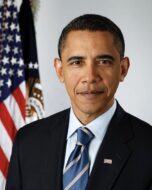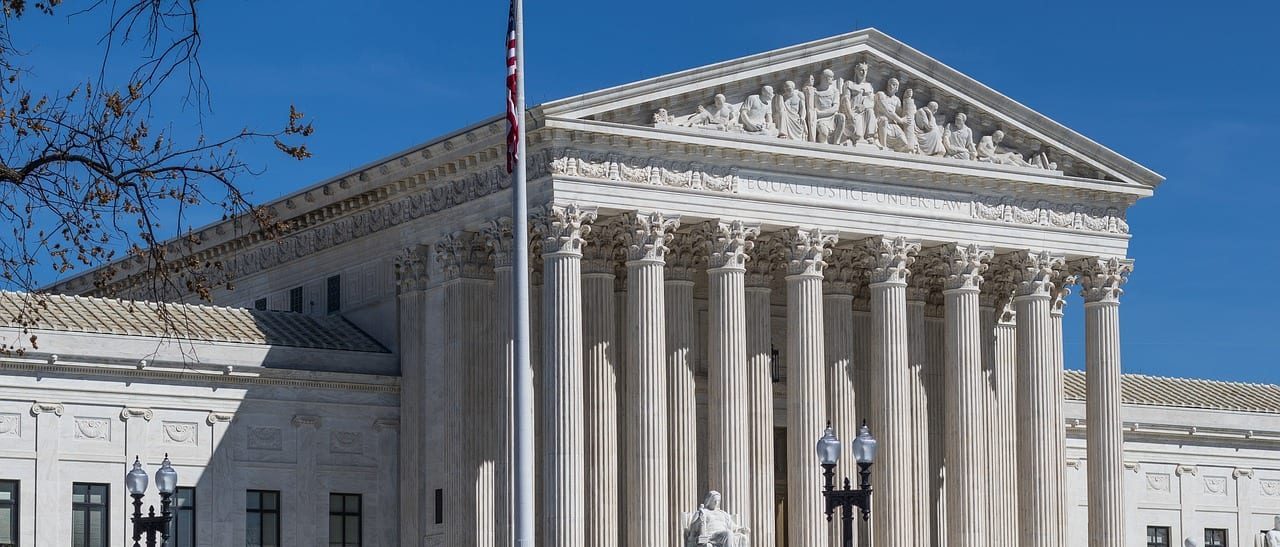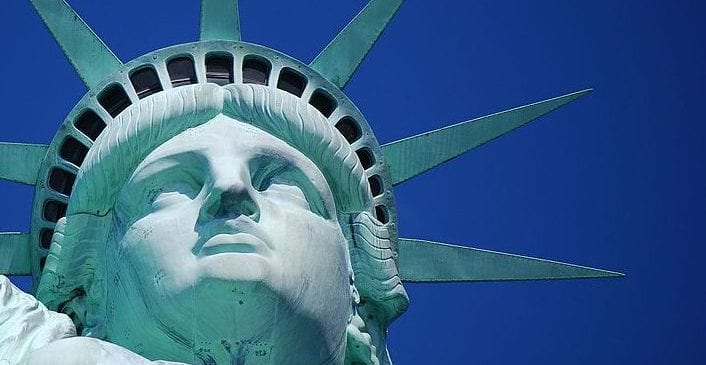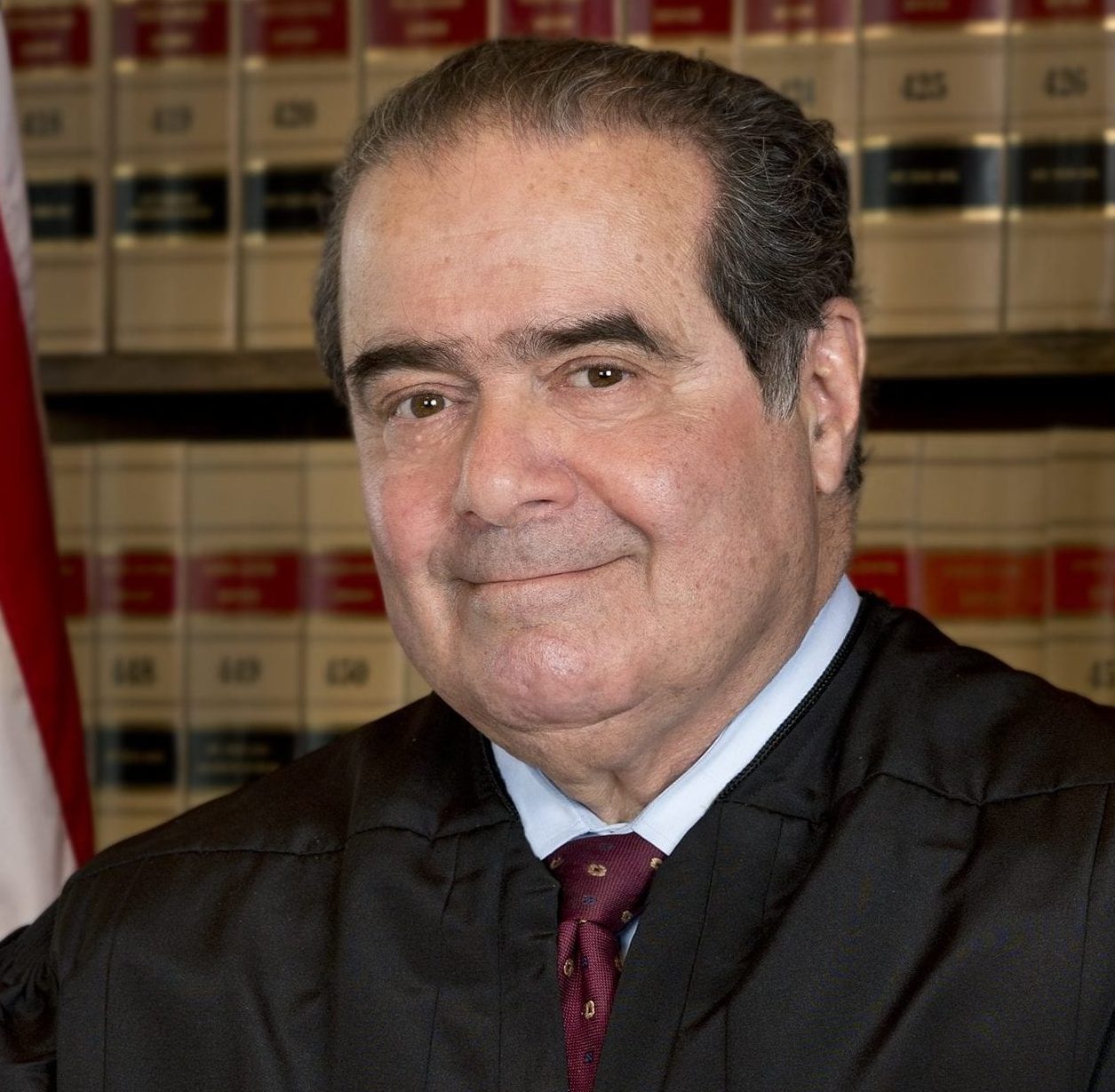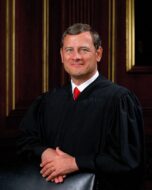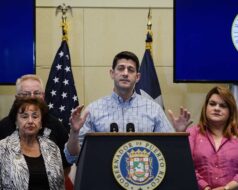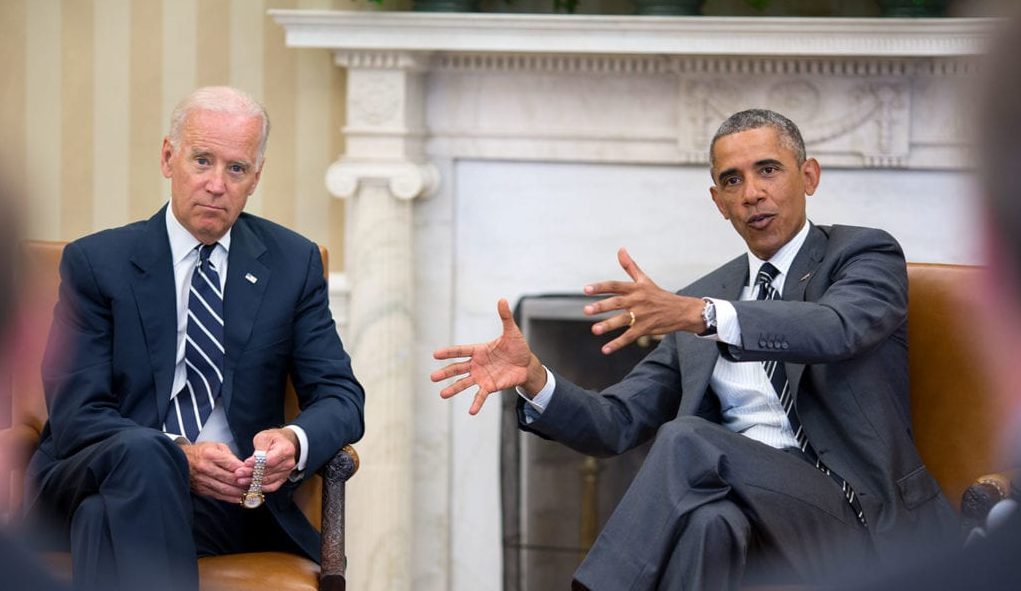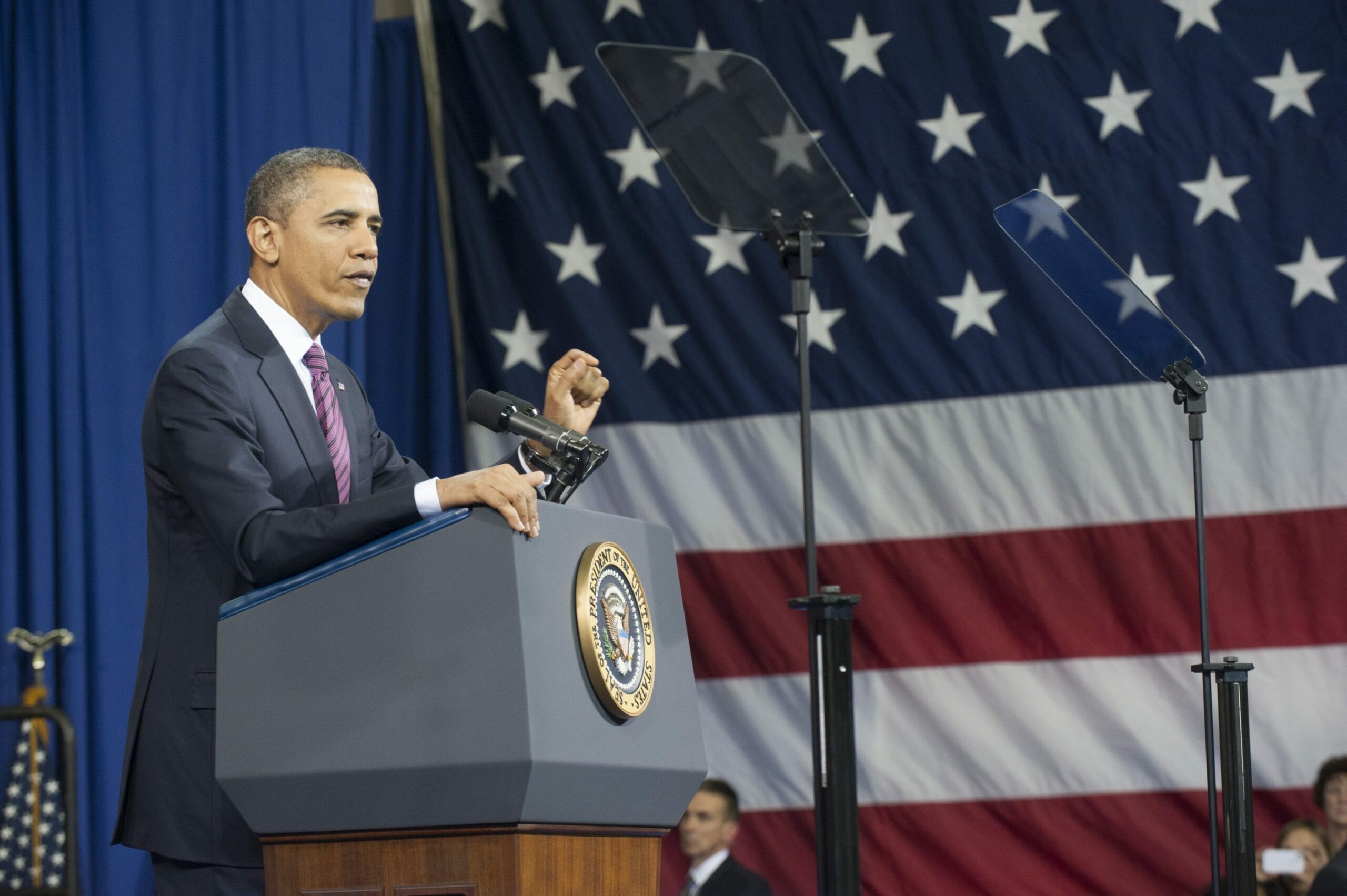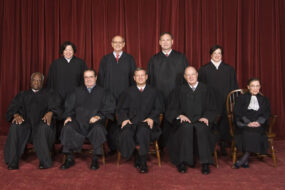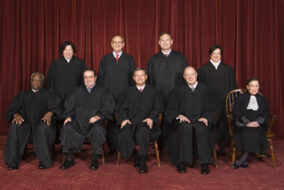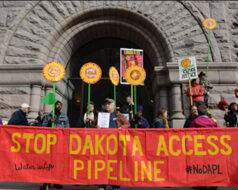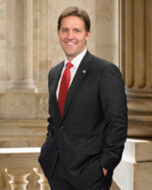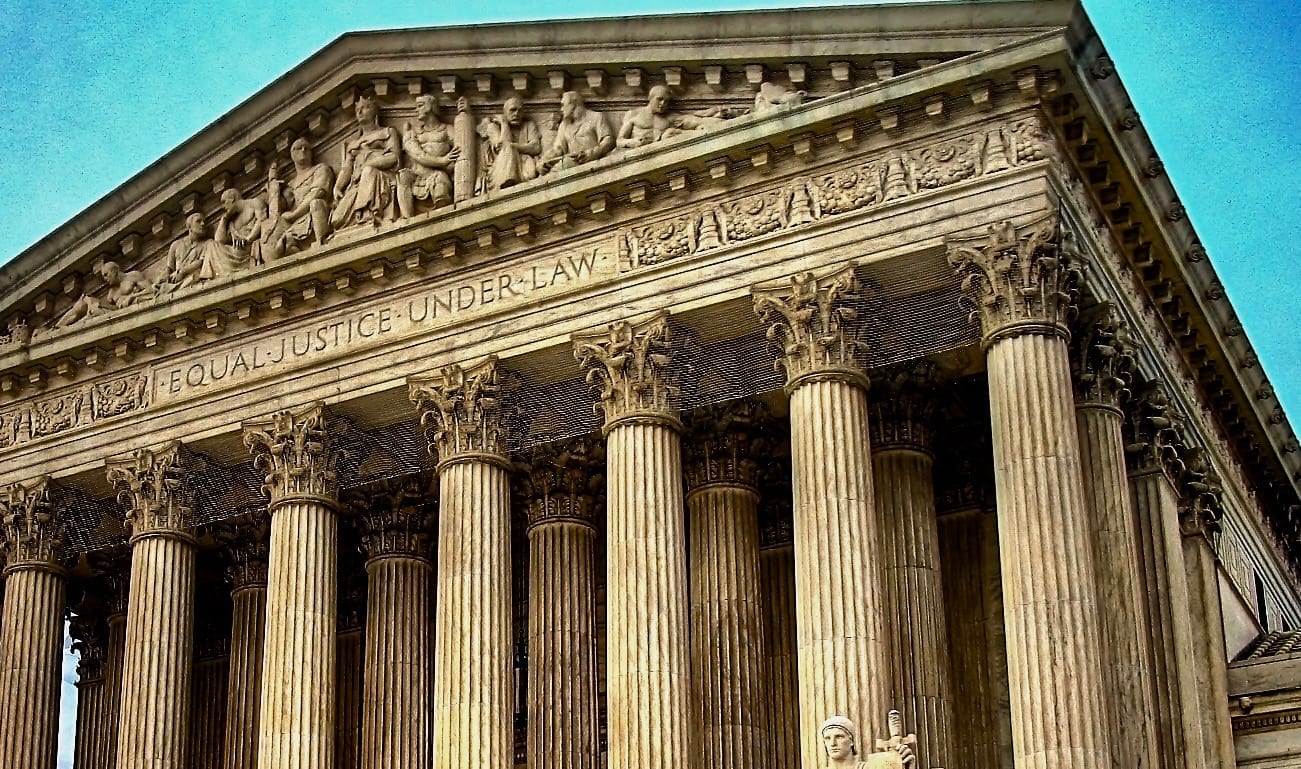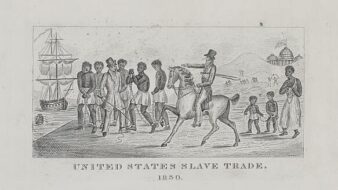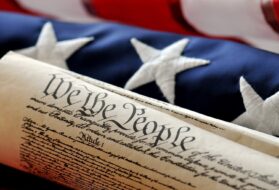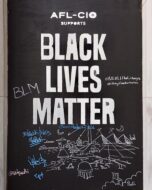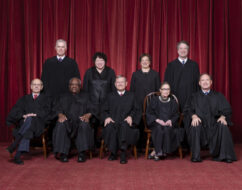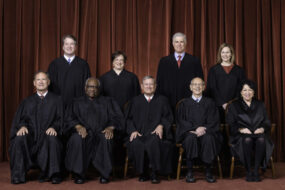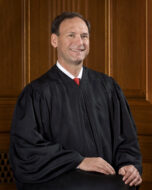
Introduction
In Matal v. Tam the Supreme Court unanimously struck down the U.S. Patent and Trademark Office’s (PTO) “disparagement clause” of the Lanham, or Trademark Act (1946) as a violation of the First Amendment. Simon Tam was the leader of a rock band known as “The Slants,” a derogatory term for Asians, even though all the members of the band were of Asian ancestry. Indeed, they chose this name in a deliberate effort to “reclaim it” by stripping it of its “denigrating force.” In 2011, Tam attempted to register his band’s name officially as a trademark but was denied by the PTO under the “disparagement clause” of the Lanham Act, which prohibited “the registration of trademark which may disparage . . . persons, living or dead, institutions, beliefs, or national symbols, or bring them into contempt, or disrepute.” Tam sued on First Amendment grounds but lost at the federal district court level. The circuit court then overruled and decided in Tam’s favor. The U.S. government appealed that decision to the Supreme Court.
Writing for a unanimous Court, Justice Samuel Alito (1950–) ruled that Tam’s trademark conveyed a viewpoint entitled to heightened protection under the First Amendment. By favoring positive messages about racial and ethnic groups while disfavoring negative ones, the disparagement clause engages in impermissible viewpoint discrimination by the government.
Source: 582 U.S. ___, https://www.law.cornell.edu/supremecourt/text/15-1293.
JUSTICE ALITO announced the judgment of the Court and delivered the opinion of the Court with respect to Parts I, II, and III-A, and an opinion with respect to Parts III-B, III-C, and IV, in which THE CHIEF JUSTICE, JUSTICE THOMAS, and JUSTICE BREYER join. . . .
The Patent and Trademark Office (PTO) denied the application based on a provision of federal law prohibiting the registration of trademarks that may “disparage . . . or bring . . . into contemp[t] or disrepute” any “persons, living or dead” (15 U. S. C. §1052(a)). We now hold that this provision violates the free speech clause of the First Amendment. It offends a bedrock First Amendment principle: Speech may not be banned on the ground that it expresses ideas that offend. . . .
Because the disparagement clause applies to marks that disparage the members of a racial or ethnic group, we must decide whether the clause violates the free speech clause of the First Amendment. And at the outset, we must consider three arguments that would either eliminate any First Amendment protection or result in highly permissive rational-basis review. Specifically, the government contends (1) that trademarks are government speech, not private speech; (2) that trademarks are a form of government subsidy; and (3) that the constitutionality of the disparagement clause should be tested under a new “government-program” doctrine. We address each of these arguments below. . . .
It is claimed that the disparagement clause serves two interests. The first is phrased in a variety of ways in the briefs. Echoing language in one of the opinions below, the government asserts an interest in preventing “underrepresented groups” from being “bombarded with demeaning messages in commercial advertising.” An amicus[1] supporting the government refers to “encouraging racial tolerance and protecting the privacy and welfare of individuals.” But no matter how the point is phrased, its unmistakable thrust is this: The government has an interest in preventing speech expressing ideas that offend. And, as we have explained, that idea strikes at the heart of the First Amendment. Speech that demeans on the basis of race, ethnicity, gender, religion, age, disability, or any other similar ground is hateful; but the proudest boast of our free speech jurisprudence is that we protect the freedom to express “the thought that we hate” (United States v. Schwimmer, 1929).
The second interest asserted is protecting the orderly flow of commerce. Commerce, we are told, is disrupted by trademarks that “involv[e] disparagement of race, gender, ethnicity, national origin, religion, sexual orientation, and similar demographic classification.” Such trademarks are analogized to discriminatory conduct, which has been recognized to have an adverse effect on commerce.
A simple answer to this argument is that the disparagement clause is not “narrowly drawn” to drive out trademarks that support invidious discrimination. The clause reaches any trademark that disparages any person, group, or institution. It applies to trademarks like the following: “Down with racists,” “Down with sexists,” “Down with homophobes.” It is not an antidiscrimination clause; it is a happy-talk clause. In this way, it goes much further than is necessary to serve the interest asserted.
The clause is far too broad in other ways as well. The clause protects every person living or dead as well as every institution. Is it conceivable that commerce would be disrupted by a trademark saying: “James Buchanan was a disastrous president” or “Slavery is an evil institution”?
There is also a deeper problem with the argument that commercial speech may be cleansed of any expression likely to cause offense. The commercial market is well stocked with merchandise that disparages prominent figures and groups, and the line between commercial and non-commercial speech is not always clear, as this case illustrates. If affixing the commercial label permits the suppression of any speech that may lead to political or social “volatility,” free speech would be endangered.
For these reasons, we hold that the disparagement clause violates the free speech clause of the First Amendment. The judgment of the federal circuit is affirmed.
It is so ordered.
JUSTICE KENNEDY, with whom JUSTICE GINSBURG, JUSTICE SOTOMAYOR, and JUSTICE KAGAN join, concurring in part and concurring in the judgment. . . .
. . . This separate writing explains in greater detail why the First Amendment’s protections against viewpoint discrimination apply to the trademark here. It submits further that the viewpoint discrimination rationale renders unnecessary any extended treatment of other questions raised by the parties.
Those few categories of speech that the government can regulate or punish—for instance, fraud, defamation, or incitement—are well established within our constitutional tradition. See United States v. Stevens (2010). Aside from these and a few other narrow exceptions, it is a fundamental principle of the First Amendment that the government may not punish or suppress speech based on disapproval of the ideas or perspectives the speech conveys. See Rosenberger v. Rector and Visitors of University of Virginia (1995).
The First Amendment guards against laws “targeted at specific subject matter,” a form of speech suppression known as content-based discrimination (Reed v. Town of Gilbert, 2015). This category includes a subtype of laws that go further, aimed at the suppression of “particular views . . . on a subject” (Rosenberger). A law found to discriminate based on viewpoint is an “egregious form of content discrimination,” which is “presumptively unconstitutional.”
At its most basic, the test for viewpoint discrimination is whether—within the relevant subject category—the government has singled out a subset of messages for disfavor based on the views expressed. See Cornelius v. NAACP Legal Defense & Education Fund, Inc. (1985). . . . In the instant case, the disparagement clause the government now seeks to implement and enforce identifies the relevant subject as “persons, living or dead, institutions, beliefs, or national symbols.” Within that category, an applicant may register a positive or benign mark but not a derogatory one. The law thus reflects the government’s disapproval of a subset of messages it finds offensive. This is the essence of viewpoint discrimination.
The government disputes this conclusion. It argues, to begin with, that the law is viewpoint neutral because it applies in equal measure to any trademark that demeans or offends. This misses the point. A subject that is first defined by content and then regulated or censored by mandating only one sort of comment is not viewpoint neutral. To prohibit all sides from criticizing their opponents makes a law more viewpoint based, not less so (cf. Rosenberger). . . . The logic of the government’s rule is that a law would be viewpoint neutral even if it provided that public officials could be praised but not condemned. The First Amendment’s viewpoint neutrality principle protects more than the right to identify with a particular side. It protects the right to create and present arguments for particular positions in particular ways, as the speaker chooses. By mandating positivity, the law here might silence dissent and distort the marketplace of ideas.
The government next suggests that the statute is viewpoint neutral because the disparagement clause applies to trademarks regardless of the applicant’s personal views or reasons for using the mark. Instead, registration is denied based on the expected reaction of the applicant’s audience. In this way, the argument goes, it cannot be said that government is acting with hostility toward a particular point of view. For example, the government does not dispute that respondent seeks to use his mark in a positive way. Indeed, respondent endeavors to use The Slants to supplant a racial epithet, using new insights, musical talents, and wry humor to make it a badge of pride. Respondent’s application was denied not because the government thought his object was to demean or offend but because the government thought his trademark would have that effect on at least some Asian Americans.
The government may not insulate a law from charges of viewpoint discrimination by tying censorship to the reaction of the speaker’s audience. The Court has suggested that viewpoint discrimination occurs when the government intends to suppress a speaker’s beliefs (Reed), but viewpoint discrimination need not take that form in every instance. The danger of viewpoint discrimination is that the government is attempting to remove certain ideas or perspectives from a broader debate. That danger is all the greater if the ideas or perspectives are ones a particular audience might think offensive, at least at first hearing. An initial reaction may prompt further reflection, leading to a more reasoned, more tolerant position.
Indeed, a speech burden based on audience reactions is simply government hostility and intervention in a different guise. The speech is targeted, after all, based on the government’s disapproval of the speaker’s choice of message. And it is the government itself that is attempting in this case to decide whether the relevant audience would find the speech offensive. For reasons like these, the Court’s cases have long prohibited the government from justifying a First Amendment burden by pointing to the offensiveness of the speech to be suppressed.
The government’s argument in defense of the statute assumes that respondent’s mark is a negative comment. In addressing that argument on its own terms, this opinion is not intended to imply that the government’s interpretation is accurate. From respondent’s[2] submissions, it is evident he would disagree that his mark means what the government says it does. The trademark will have the effect, respondent urges, of reclaiming an offensive term for the positive purpose of celebrating all that Asian Americans can and do contribute to our diverse nation. While thoughtful persons can agree or disagree with this approach, the dissonance between the trademark’s potential to teach and the government’s insistence on its own, opposite, and negative interpretation confirms the constitutional vice of the statute.
A law that can be directed against speech found offensive to some portion of the public can be turned against minority and dissenting views to the detriment of all. The First Amendment does not entrust that power to the government’s benevolence. Instead, our reliance must be on the substantial safeguards of free and open discussion in a democratic society.
For these reasons, I join the Court’s opinion in part and concur in the judgment.

Conversation-based seminars for collegial PD, one-day and multi-day seminars, graduate credit seminars (MA degree), online and in-person.
